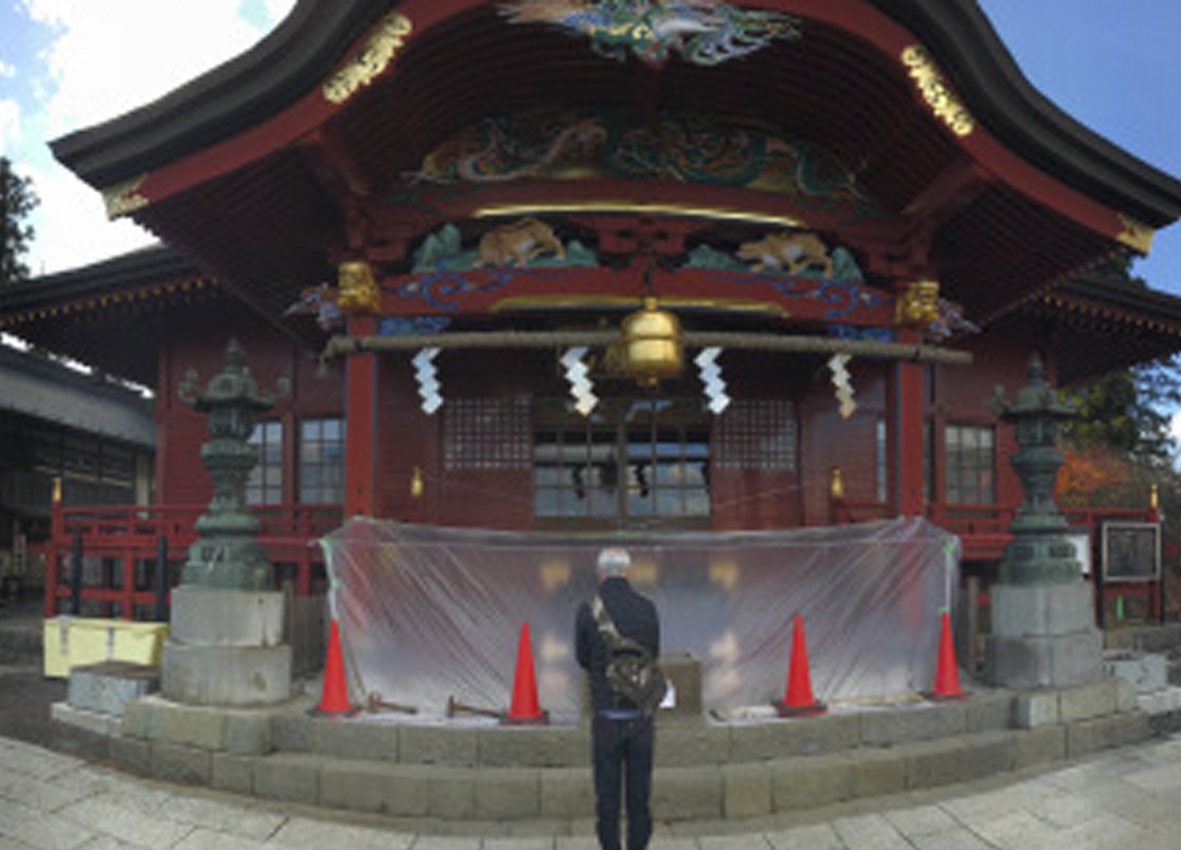
‘Sword girls’ help obscure Kyoto shrine procure restoration funds
YAWATA, Kyoto Prefecture - A tweet that legendary swords featured in the popular video game were forged at a humble shrine here has set off a stampede by so-called sword girls.
Thanks to its newfound popularity, Aitsuchijinja shrine has raised about 4 million yen ($35,000), far exceeding its goal, in a crowdfunding campaign to refurbish its aging facilities.
The small Shinto shrine has become a holy site for “touken joshi,” who, influenced mainly by the “Touken Ranbu Online”game, became fans of Japanese swords.
As part of their “pilgrimages,” the women visit locations connected to the game, which features anthropomorphized characters representing noted blades.
Aitsuchijinja stands at the foot of Mount Otokoyama, where Iwashimizu Hachimangu shrine, a government-designated national treasure, is located. Its main hall and office building are falling into disrepair.
Kiyoko Takatsuki, 42, who became its head priest in February 2018, launched a reconstruction project with volunteers and set up a website to introduce the shrine's history.
In August, a female visitor to the shrine tweeted: “I hear it's a place where famed swords ‘Higekiri’ and ‘Hizamaru’ were forged.”
She also wrote that visitors could get “goshuin” seal stamps there during the Tsukinami-sai festival held twice a month.
More than 100 visitors, mostly women, showed up at the shrine's Sept. 1 festival.
A swordsmith in the Heian Period (794-1185) named Yasutsuna forged the celebrated blades with water from the Yamanoi well at the shrine, according to historical records kept by the shrine.
When the shrine started a crowdfunding campaign on Jan. 31 to renovate a stand where visitors offer votive candles, it reached its target of 740,000 yen in five hours.
The shrine raised the goal to 2.6 million yen to also refurbish the Yamanoi well and cover other expenses, eventually taking in more than 4 million yen from 171 sponsors.
“I’m a touken joshi, too. I’m happy that I came to this place because I could see the well,” said Minori Fukushima, 29, a company worker from Fukuoka, who attended the Tsukinami-sai festival on March 1.
“I think that the job of a Shinto priest is to connect people to the gods to help them, but now, I'm so grateful that we are supported by so many people,” Takatsuki said. “I hope we can renovate the main hall and the office building as soon as possible.”
The shrine plans to hold a swashbuckling performance during the festival on May 15 and June 1 to pray for the shrine's reconstruction.
Source: http://www.asahi.com/ajw/articles/AJ201904220001.html
 English
English Japan
Japan

18+ android sex games japanese sex games live best free sex games
gnc ed pills - erection pills viagra online ed pills cheap
furosemide chemical structure furosemide 45 mg furosemide oral solution side effects how much lasix can i take
200 mg generic viagra pills mixing viagra and marijuana viagra pills for men best results using viagra 100 mg viagra street price pink ladies clothing
antibiotic azithromycin azithromycin 500g tablets azithromycin dosage for strep throat how to use azithromycin
legit canadian pharmacy - real canadian pharmacy canadian pharmacy meds review
what is azithromycin azithromycin 250mg tablets for sale where can i buy zithromax online how long does it take to cure chlamydia with azithromycin
lasix over dose how fast does lasix work adverse reactions of lasix with chf what to monitor
chloroquine azithromycin azithromycin dosage for 10 year old what std does azithromycin treat
generic address lamar odom overdose location online viagra walmart 8 digit promo code viagra fast delivery usa most effective ed supplements viagra without a doctor prescription look up prescription drug costs when should you take viagra boost men's libido naturally antibiotic samples for physician viagra receptfritt drug prices in the philippines does walmart accept digital coupons tramadol and marijuana interaction viagra pour homme home remedies for migraine headaches pfizer patient assistance enrollment forms viagra patient information bestellen viagra how long does viagra work check pharmacy prices at walmart grapefruit juice and benzodiazepines snorting viagra free coupons by mail tadalafil india pharmacy does walgreens accept goodrx discount viagra cost per pill viagra users group how cialis works companies that have free samples doctor x viagra what does viagra do to women walk in clinics near me
neurontin drug interaction neurontin 4 mg how does neurontin interact with hydrocodone how do you get high on gabapentin
online pharmacy ordering - 20 mg cialis cost rite aid where to buy female viagra in us
zithromax 250mg dosage azithromycin price canada azithromycin for gonorrhea and chlamydia azithromycin how long
dapoxetine interactions generic priligy 30 mg side effects of dapoxetine and sildenafil tablets how to get priligy
order stromectol - cost of ivermectin pill purchase stromectol online
200mg provigil modafinil overnight delivery taking benzadrex while still on modafinil where to get provigil
priligy review forums dapoxetine buy online order priligy online reddit how do i take dapoxetine liquid?
cialis 5 mg lowest price penile implant size options viagra tablets lisinopril and grapefruit sildenafil 20mg sams pharmacy best online international pharmacies
how often amoxil buy amoxicilin noscript side effects of amoxil in dogs how much amoxil safe for cat
online casino real money - site best online casinos that payout
couponing at walgreens this week how to take viagra effectively is sildenafil effective instant natural viagra lyrica pharmacy coupon natural sildenafil citrate sources
zithromax drug class azithromycin prescription canada what is azithromycin prescribed for how long before azithromycin works
buy amoxicilin 500 mg online canada - buy amoxil usa amoxil online
does prednisone prednisone 5092 can you take tylenol while taking prednisone what is the medication prednisone used for?
how to buy accutane online - accutane medication accutane price in usa
grapefruit and viagra side effects cialis melanoma lawsuit trulicity pen demonstration homemade viagra tadalafil 5 mg for sale how to take viagra for maximum effect goodrx